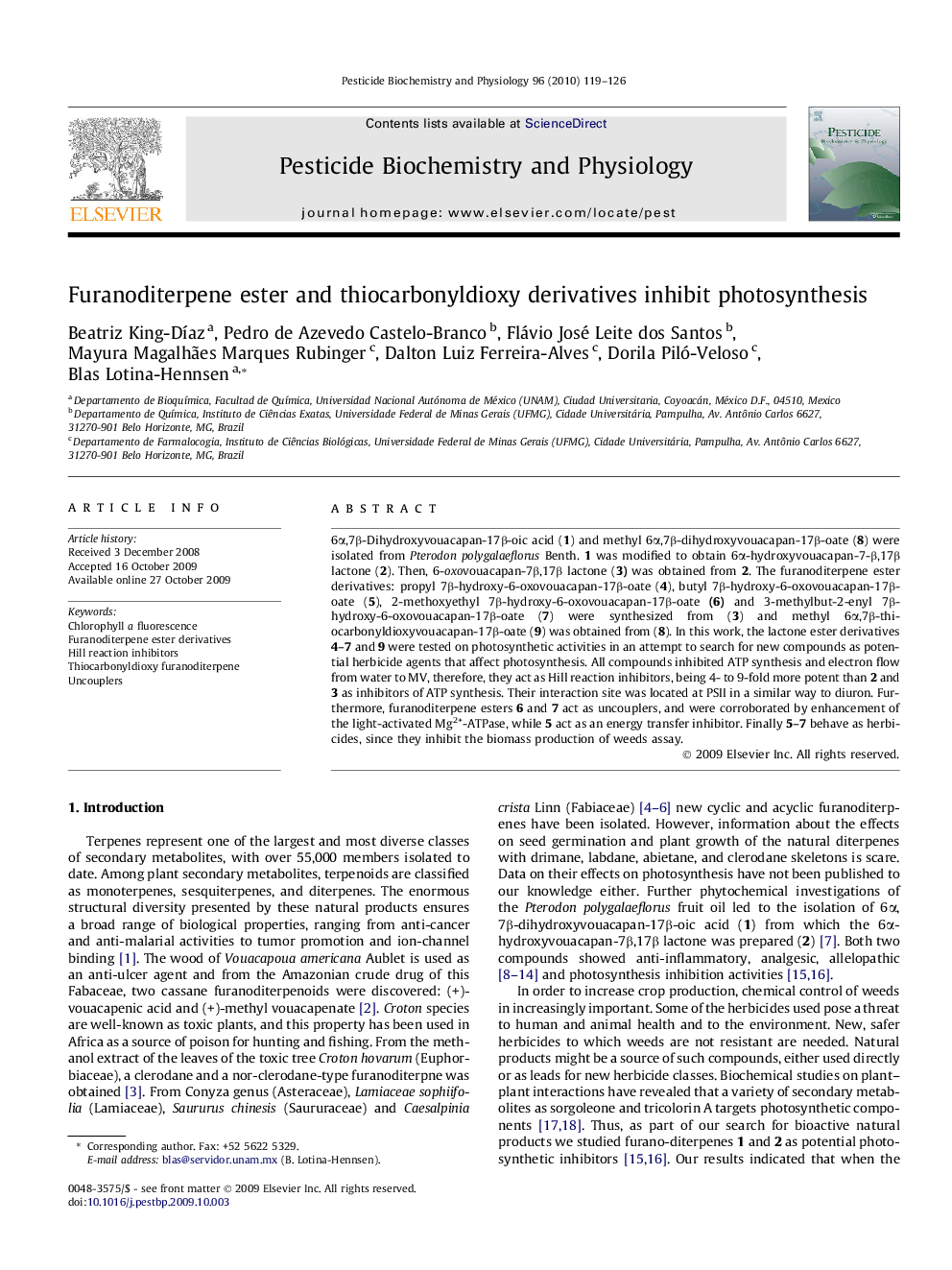| Article ID | Journal | Published Year | Pages | File Type |
|---|---|---|---|---|
| 2009859 | Pesticide Biochemistry and Physiology | 2010 | 8 Pages |
Abstract
6α,7β-Dihydroxyvouacapan-17β-oic acid (1) and methyl 6α,7β-dihydroxyvouacapan-17β-oate (8) were isolated from Pterodon polygalaeflorus Benth. 1 was modified to obtain 6α-hydroxyvouacapan-7-β,17β lactone (2). Then, 6-oxovouacapan-7β,17β lactone (3) was obtained from 2. The furanoditerpene ester derivatives: propyl 7β-hydroxy-6-oxovouacapan-17β-oate (4), butyl 7β-hydroxy-6-oxovouacapan-17β-oate (5), 2-methoxyethyl 7β-hydroxy-6-oxovouacapan-17β-oate (6) and 3-methylbut-2-enyl 7β-hydroxy-6-oxovouacapan-17β-oate (7) were synthesized from (3) and methyl 6α,7β-thiocarbonyldioxyvouacapan-17β-oate (9) was obtained from (8). In this work, the lactone ester derivatives 4-7 and 9 were tested on photosynthetic activities in an attempt to search for new compounds as potential herbicide agents that affect photosynthesis. All compounds inhibited ATP synthesis and electron flow from water to MV, therefore, they act as Hill reaction inhibitors, being 4- to 9-fold more potent than 2 and 3 as inhibitors of ATP synthesis. Their interaction site was located at PSII in a similar way to diuron. Furthermore, furanoditerpene esters 6 and 7 act as uncouplers, and were corroborated by enhancement of the light-activated Mg2+-ATPase, while 5 act as an energy transfer inhibitor. Finally 5-7 behave as herbicides, since they inhibit the biomass production of weeds assay.
Keywords
Related Topics
Life Sciences
Agricultural and Biological Sciences
Agronomy and Crop Science
Authors
Beatriz King-DÃaz, Pedro de Azevedo Castelo-Branco, Flávio José Leite dos Santos, Mayura Magalhães Marques Rubinger, Dalton Luiz Ferreira-Alves, Dorila Piló-Veloso, Blas Lotina-Hennsen,
